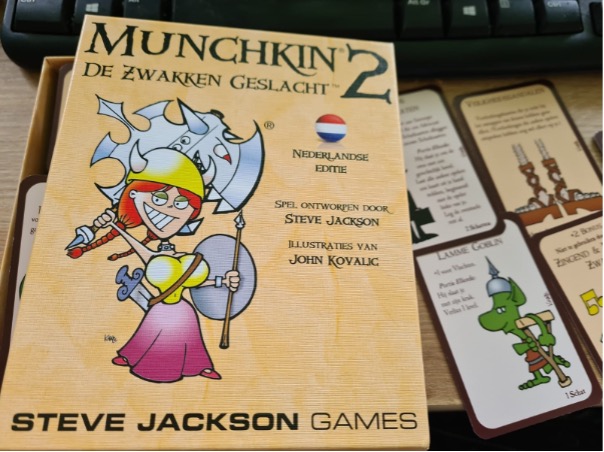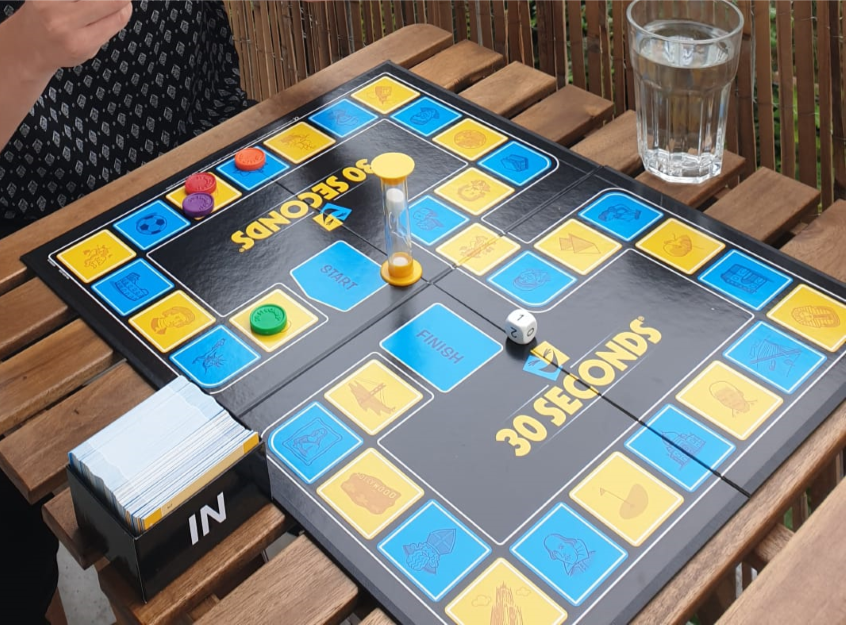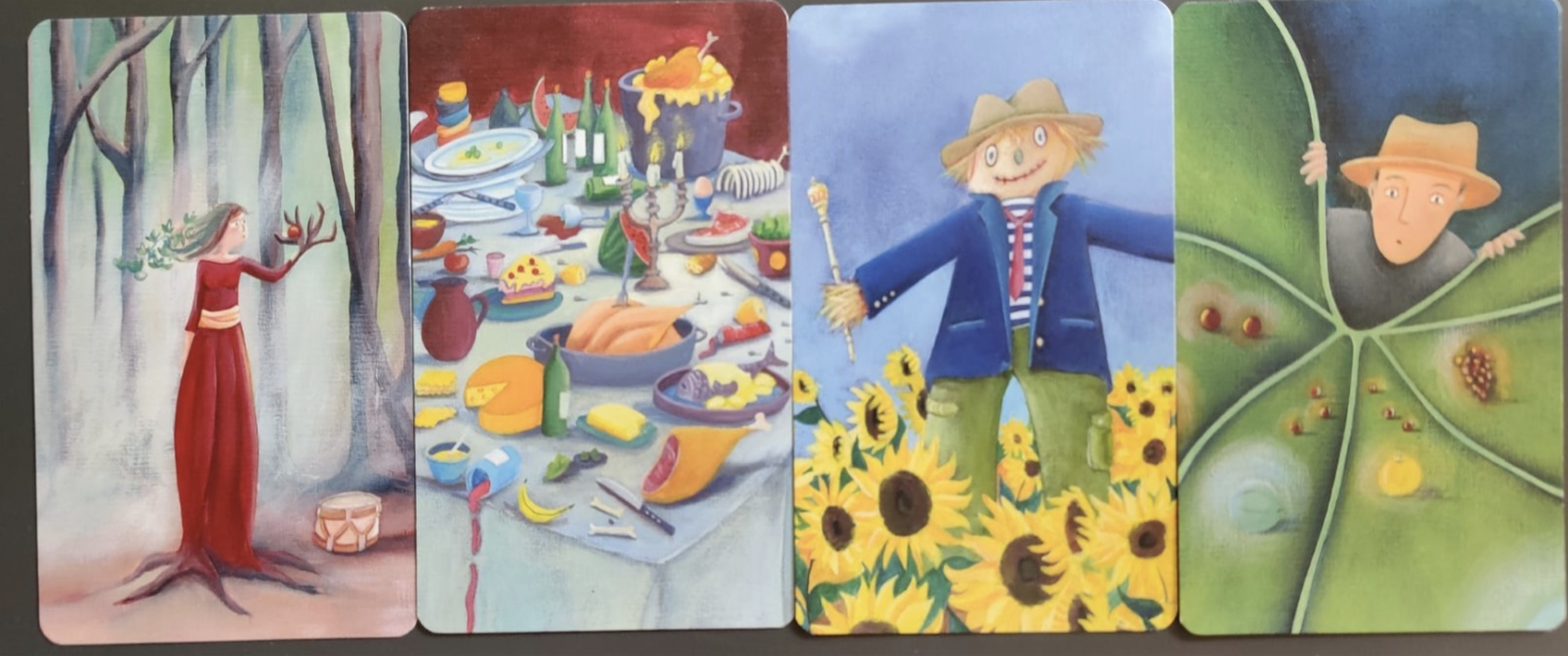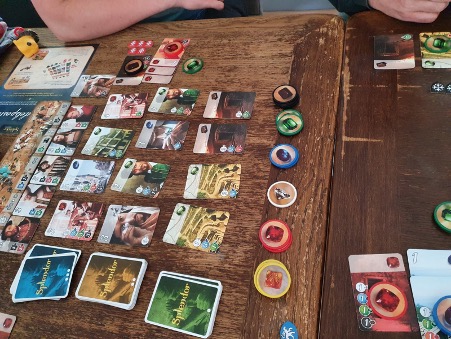Insights
Playful Learning Inspiration from Board Games
At the Centre for Innovation, we don’t just write about playful learning, we also play a game every now and then. In this summer edition, we share some of our favourite games with you and explain which of their playful principles we like most.

As learning experience experts, we look for inspiration to stimulate curiosity, skill-building and knowledge transfer. Board games are full of insights for our exploration of playful learning. Below, we outline how our favourite games embody playful principles that inspire us for course design and could help achieve learning objectives and student motivation.
What would you bring from your favourite games to the classroom?
Tanja: Munchkin and Cards Against Humanity

What are the games about?
Munchkin is a card game that parodies the various RPGs (role-playing games) like Dungeons & Dragons. Using (mythical) race, character, weapons, and dungeons you try to level up to become more powerful. The person who reaches level 10 first wins. It mostly relies on chance and strategic use of powers.
Cards Against Humanity (international version, a party game for adults) is a somewhat dark card game where you try to make the most funny or epic combination of a black card (start of a sentence) and a white card (finishing the sentence or filling the open dots). The ‘card czar’ decides who wins the round. It requires players to use creativity, but also empathy and communication to guess what the other players will find the most hilarious.
What do you like about the games?
The games are witty and ironic, making fun both of games and (adult) real-life situations. They allow you to see the humour in everyday life. In the case of Munchkin, it also neatly explains the game strategies in the average RPG (getting a mightier sword, an important title or more resources). It has a very strong insider joke presence, which is both a draw and a drawback.
Which playful element/principle stands out to you in this/these game)?
Both games require players to combine strategy, humour, creativity and improvisation, and share a lot of insider jokes and laughter. Even though they are not collaborative games, it is the experience which is fun, rather than winning.
Emma: 30 Seconds

What is the game about?
Players test their general knowledge and communication skills by playing the board game 30 Seconds. The game is played in pairs or small teams. Every turn, one player needs to describe five words to their teammates, without mentioning (a part of) the word itself. The teammates have 30 seconds to guess as many words as possible.
What do you like about the game?
I enjoy playing this game, because I can play it with a large group of friends, I learn a lot from it (eg, geographical, historical, political, and cultural knowledge), and the time pressure and weird descriptions always cause a lot of laughter.
Which playful elements/principles stand out to you in this game? This game contains multiple playful elements. The first important elements are collaboration and communication. You rely on the knowledge and guessing skills of your teammates, so you need to describe the words in the best way possible to make it easy for your teammates to guess. Fortunately, there is an element of choice: There are five words on each card, but there is no strict order to follow. You can decide which word is the easiest to describe and you can start with that one. Your teammates have 30 seconds to guess the words, so there is time pressure and they need to concentrate. You can track the progress of your team on the board. This competitiveness makes it a lot of fun. The game also has certain rules: You can’t mention (a part of) the word itself, you can’t use words that start with a capital letter, and you can’t say “Uhm…”. These rules can be difficult and sometimes you will fail, but you will learn from this experience. And at last, probably one of the most important elements, it is educational, so your general knowledge will increase by playing this game.
Daniek: Dixit

What is the game about?
Dixit is an association game in which everyone gets a set of cards with imaginative images. The player who’s turn it is (let’s call them Sam), comes up with a word, saying or sound they associate with the image on the card. The card is placed face down on the table. All others now look in their cards to see what card they have that also relates to the word, saying or sound Sam mentioned. All players also place the cards blind on the table, now the cards will be shuffled and made visible to everyone. Now it’s time to guess which card was the card Sam put on the table.You get points if you guess correctly. Sam receives points if some of the players guess correctly, if the association was too easy or hard and everyone or no one guessed it they don’t get points.
What do you like about the game?
I like this game because you must empathise with your fellow players and try to think like them.It is always a lot of fun coming up with crazy associations and hearing what others come up with.I like that you can play this game endlessly because there are always new associations to be made and new people to play it with. Also, I think the artwork is beautiful. My favourite moment is always when someone says the name of another player, this way you get some insight into how people view you…
Which playful element/principle stands out to you in this/these game(s)?
The two principles I like to point out here are endless possibilities and creativity with boundaries.
Endless possibilities.
This is something that is hard to create in education. Once you have gone through a textbook, the next time you go through it, it will be the same. Or if you have solved the puzzle, the answer to the puzzle will stay the same and you cannot do it again. The endless possibilities that make this game keep it interesting even if you have already seen all the cards in the deck. Recreating this kind of playfulness would mean the learning materials/experience keeps being interesting even if you have already seen everything before
Creativity with boundaries.
In this game you succeed if you are creative in your associations but not if you make them too easy or too hard. This principle can be seen as what educational scientist call the zone of proximal development. Where learners are offered something that they do not already know but is within their reach, it is not too hard.
Yentl: Pandemic Rising Tide & Splendor

What is the game about?
Pandemic Rising Tide: During Pandemic Rising Tide, you need to save the Netherlands from flooding. With a team of players, you work together, by building dams and pumps against the board. However, in some cases the dams will break causing major flooding to occur.
Splendor: The goal of the game is to have the most prestige points. These points can be collected either by buying cards with prestige points, and, depending on the collection of cards, convincing noblemen to join your force.
What do you like about the game?
I really like the dynamics of both games. In Pandemic you get to work together with your fellow players, whereas Splendor is more competitive. However, both games are based on tactics, either by working together or by trying to beat each other. I also like that both games are fun to play with just two people, as well as with a larger group. Another bonus is that they haveexpansions or variations to make sure the game never gets dull!
Which playful element/principle stands out to you in this/these game(s)?
I already mentioned some of the principles, like collaboration and competition. Both games can stimulate analytical thinking. Pandemic has an educational aspect, since it has the layout and some of the major cities/areas in the Netherlands and a very solid storyline. Both are fun to play and intrinsically motivating: we can’t get enough of them!
Conclusion
We know that playfulness has numerous benefits for the classroom. But designing playful courses and learning exercises from scratch is a challenging endeavour. Instead, why not take inspiration from successful board games? You know that if a game is fun to play, that players are motivated. Combine the principles that build skills and engage players with academic elements you want your students to practice and retain. Strategy, resource allocation, collaboration, and competition (to name a few) are principles that can be transferred from the board game to the classroom.
Find out more
Are you interested in exploring playful learning? Then contact us or read more about our work in learning experiences.




